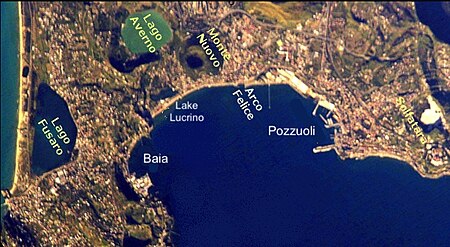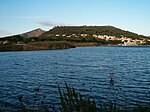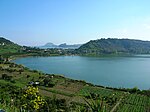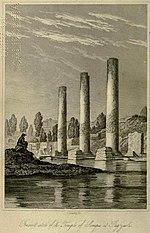Gulf of Pozzuoli
Campanian geography stubsGeography of the Metropolitan City of NaplesGulfs of ItalyGulfs of the MediterraneanLandforms of Campania ... and 1 more
Landforms of the Tyrrhenian Sea

The Gulf of Pozzuoli (Italian: Golfo di Pozzuoli; Neapolitan: Gurfo 'e Pezzulo), formerly known as the Gulf of Puteoli, is a large bay or small gulf in the northwestern end of the Gulf of Naples in the Tyrrhenian Sea. It lies west of Naples and is named for its port of Pozzuoli. The Roman Sinus Baianus was located within it, near the resort town of Baiae. Along with the island of Ischia and gulfs of Naples and Gaeta, local waters are rich in productions enough to support various species of whales and dolphins, including fin and sperm whales.
Excerpt from the Wikipedia article Gulf of Pozzuoli (License: CC BY-SA 3.0, Authors, Images).Gulf of Pozzuoli
Geographical coordinates (GPS) Address Nearby Places Show on map
Geographical coordinates (GPS)
| Latitude | Longitude |
|---|---|
| N 40.82147 ° | E 14.09391 ° |
Address
Punta Epitaffio
80070
Campania, Italy
Open on Google Maps










